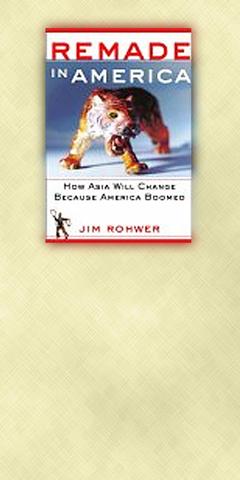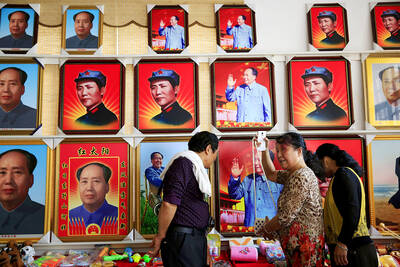Since Asian economies began to register double-digit growth beginning in the mid-1980s, economists have spent huge amounts of time and energy trying to explain the "Asian miracle." Forward-looking optimists embraced the Pacific Century hubris unconditionally and argued that the future belonged to the Asia-Pacific rim, both as a marketplace and as a manufacturing center.
But pessimists, most notably economist Paul Krugman, then of MIT but now at Princeton, argued that the Asian export machine would soon run out of steam.
In an article published in Foreign Affairs in 1994, Krugman said Asia's economic rise was not sustainable, because he saw no concurrent rise in productivity in the region. He concluded that most of the growth was attributable to increased input of cheap labor and capital.

The Asian financial crisis of 1997 made Krugman's assessments seem prophetic and inspired the Economist to dub him a "Nobel-bound economist."
In the debate over the future of Asia, Hong Kong-based contributing editor for Fortune Jim Rohwer's voice stands out as particularly authoritative.
Rohwer's book Asia Rising, published in 1995, was a solid piece of analytical journalism, which, despite its praise of Asia's economic machine, warned that the region's future may be hampered by the lack of much-needed institutional reforms.
Undaunted by the meltdown in 1997 that undermined the title of his previous book, Rohwer has now written a sequel -- Remade in America: How Asia Will Change Because America Boomed.
In this book, Rohwer remains as optimistic as ever on the future of Asia and believes that the Asian crisis was nothing but a small blip in the road toward an even greater future.
Rohwer was trained as an economist and lawyer and has worked as chief economist for investment bank CS First Boston in Hong Kong. As it happens, the book deals mainly with the Asian financial crisis, the regional recovery and how the crisis helped expunge excesses in investment across Asia. With the solitary exception of Singapore, Rohwer says corruption is widespread in Asia, including Mahathir Mohammed's Malaysia, of whom he clearly states he is no fan.
Rohwer, both in his previous book and in this one, is especially generous in stating his admiration for the Singaporean senior statesman Lee Kuan-yew (李光耀), whom he describes as the "most powerful intellect of any leader in the latter half of the 20th century."
The book also looks at the restructuring of Korea's massive chaebols, the Japanese economy and provides a slightly cursory analysis of the Taiwanese economy, including interviews with Stan Shih (施振榮) of Acer and KMT technocrat Yang Shih-chien (楊世緘).
The author is no stranger to Taiwan. In 1998, the domestic Central Bank held a press conference to deny the author's claim, put forth in his column in Fortune, that Taiwan may have kept Asian hedge funds, which wreaked havoc on the Thai Baht and other currencies, at bay by using the government's sophisticated currency controls. But his coverage of Taiwan is haphazard and generalized and fails to point out the problems that currently plague the country's banking system.
But overall, his analyses are well argued, and backed up with abundant numbers. The heavy emphasis on statistics, however, often weighs down the prose, with a typical page carrying up to 20 different figures. Such analytical acrobatics may impress fellow analysts but are likely to overwhelm lay readers.
The cumbersome analyses aside, Rohwer gives readers a fairly clear glance at corporate Asia and the thoughts that occupy the minds of the regional movers and shakers -- be they Lee Kuan-yew, or John Greenwood, the architect of the Hong Kong's renowned currency board system, or Margie Yang, a Harvard-educated head of a Hong Kong clothing firm.
A weakness in the book rests in its exclusive view of Asia through educated Asian entrepreneurs and leaders. Little attention is paid to average people, who were most affected by the Asian financial crisis. The lives of many of the poorest in countries such as Thailand and Indonesia were wrecked virtually overnight.
As an apt preface to the book's third chapter, Rohwer quotes the 19th century British thinker, John Stuart Mill. "Panics do not destroy capital; they merely reveal the extent to which it has been previously destroyed by its betrayal into hopelessly unproductive works."
Ironically, it is in Rohwer's previous book that he failed to detect those same "hopelessly unproductive works" that were ticking away like a timebomb until 1997.
Anyone courageous enough to write on a region as diverse and complex as Asia in one straight sweep opens himself up to broad criticism. Nonetheless, the book succeeds in explaining in considerable depth how Asia is remaking itself after the brutal wakeup call of 1997.
Tsering Namgyal covers finance and economics for the 'Taipei Times.'

Taiwan can often feel woefully behind on global trends, from fashion to food, and influences can sometimes feel like the last on the metaphorical bandwagon. In the West, suddenly every burger is being smashed and honey has become “hot” and we’re all drinking orange wine. But it took a good while for a smash burger in Taipei to come across my radar. For the uninitiated, a smash burger is, well, a normal burger patty but smashed flat. Originally, I didn’t understand. Surely the best part of a burger is the thick patty with all the juiciness of the beef, the

The ultimate goal of the Chinese Communist Party (CCP) is the total and overwhelming domination of everything within the sphere of what it considers China and deems as theirs. All decision-making by the CCP must be understood through that lens. Any decision made is to entrench — or ideally expand that power. They are fiercely hostile to anything that weakens or compromises their control of “China.” By design, they will stop at nothing to ensure that there is no distinction between the CCP and the Chinese nation, people, culture, civilization, religion, economy, property, military or government — they are all subsidiary

This year’s Miss Universe in Thailand has been marred by ugly drama, with allegations of an insult to a beauty queen’s intellect, a walkout by pageant contestants and a tearful tantrum by the host. More than 120 women from across the world have gathered in Thailand, vying to be crowned Miss Universe in a contest considered one of the “big four” of global beauty pageants. But the runup has been dominated by the off-stage antics of the coiffed contestants and their Thai hosts, escalating into a feminist firestorm drawing the attention of Mexico’s president. On Tuesday, Mexican delegate Fatima Bosch staged a

Would you eat lab-grown chocolate? I requested a sample from California Cultured, a Sacramento-based company. Its chocolate, not yet commercially available, is made with techniques that have previously been used to synthesize other bioactive products like certain plant-derived pharmaceuticals for commercial sale. A few days later, it arrives. The morsel, barely bigger than a coffee bean, is supposed to be the flavor equivalent of a 70 percent to 80 percent dark chocolate. I tear open its sealed packet and a chocolatey aroma escapes — so far, so good. I pop it in my mouth. Slightly waxy and distinctly bitter, it boasts those bright,